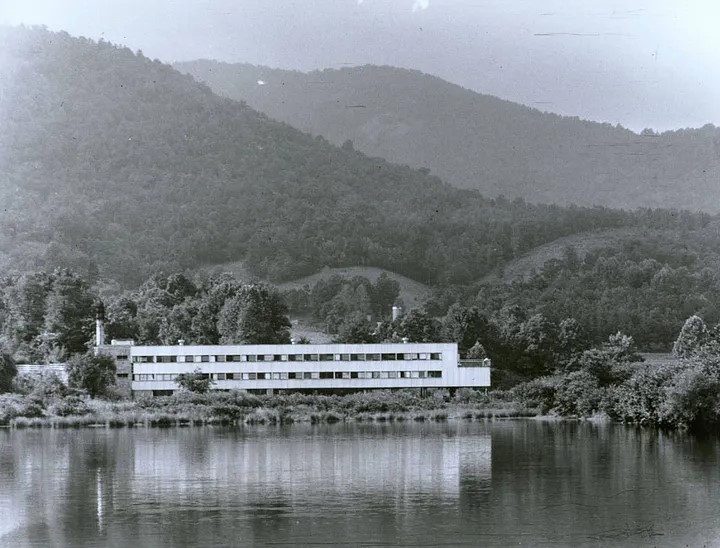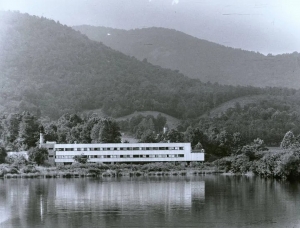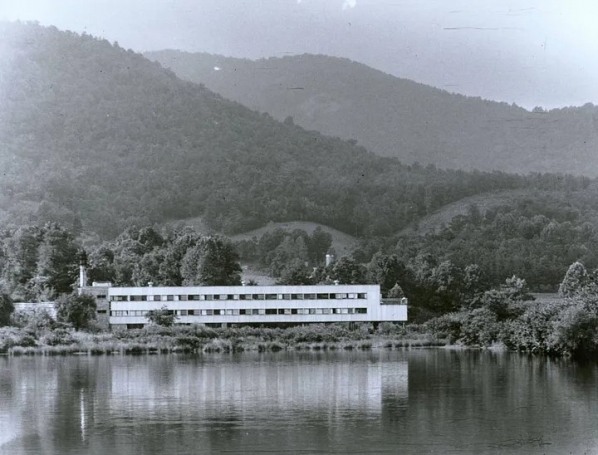
Photo courtesy of the Western Regional Archives, a branch of the North Carolina State Archives
A new digital exhibit, Black Mountain College: Innovation in Art, Education, and Lifestyle, is now accessible on Belk Library and Information Commons’ Digital Collections. It examines the history and legacy of Black Mountain College, an experimental educational institution that operated from 1933 to 1957 in the Swannanoa Valley of North Carolina. The school’s two picturesque locations in this area served to inspire the creativity of both faculty and students, and fostered a unique atmosphere for a variety of artists such as dancers, musicians, photographers, painters, and poets.
The exhibit explores the school’s history chronologically from its founding in 1933 to its closure in 1957. The digital collection contains documents, letters, and photographs that provide insight into life at Black Mountain College. Joseph Bathanti, North Carolina Poet Laureate (2012–2014) and McFarlane Family Distinguished Professor in Interdisciplinary Education & Writer-in-Residence for Watauga Residential College, helped guide the exhibit and contextualizes it in the Introduction page. The exhibit is organized into three sections based on the decades of the three major rectors of the college: John Andrew Rice, Josef Albers, and Charles Olson.

John Andrew Rice
John Andrew Rice’s section of the exhibit covers the 1930s which includes the College’s founding and when the College was located at the Blue Ridge Assembly campus. It includes documents about the intellectual principles of the school and their continued discussion at faculty meetings, writings from students and photographs of student life, evidence of the College’s unstable financial situation, and the aftermath of Rice’s departure in 1939.
Josef Albers’ section of the exhibit includes the 1940s, when the College moved to the Lake Eden property. It includes documents and photographs about the growth of visual arts, pottery, weaving, and architectural innovations at the College.
Charles Olson’s section of the exhibit includes the 1950s and displays photographs and manuscripts that focus on Black Mountain College writers, including the development of The Black Mountain Review and the flourishing of music and dance at the College.
The John Andrew Rice Papers, located in Appalachian State University’s W.L. Eury Appalachian Collection, along with the F. Whitney Jones Papers form the basis of this exhibit. Many of the images within the exhibit are from Black Mountain related collections at Western Regional Archives of North Carolina. In addition, we are indebted to the many other intellectual copyright holders who gave permission for these works to be displayed publicly.
To this day, the college’s legacy of innovation intrigues many people to want to study it and its influence on experimental education.

To access this exhibit go to https://omeka.library.appstate.edu/exhibits/show/bmc
To learn more, please contact spcoll@appstate.edu or 828–262–4041.
Written by Liv Winnicki, former Rare Books and Archives Reference Student Assistant

